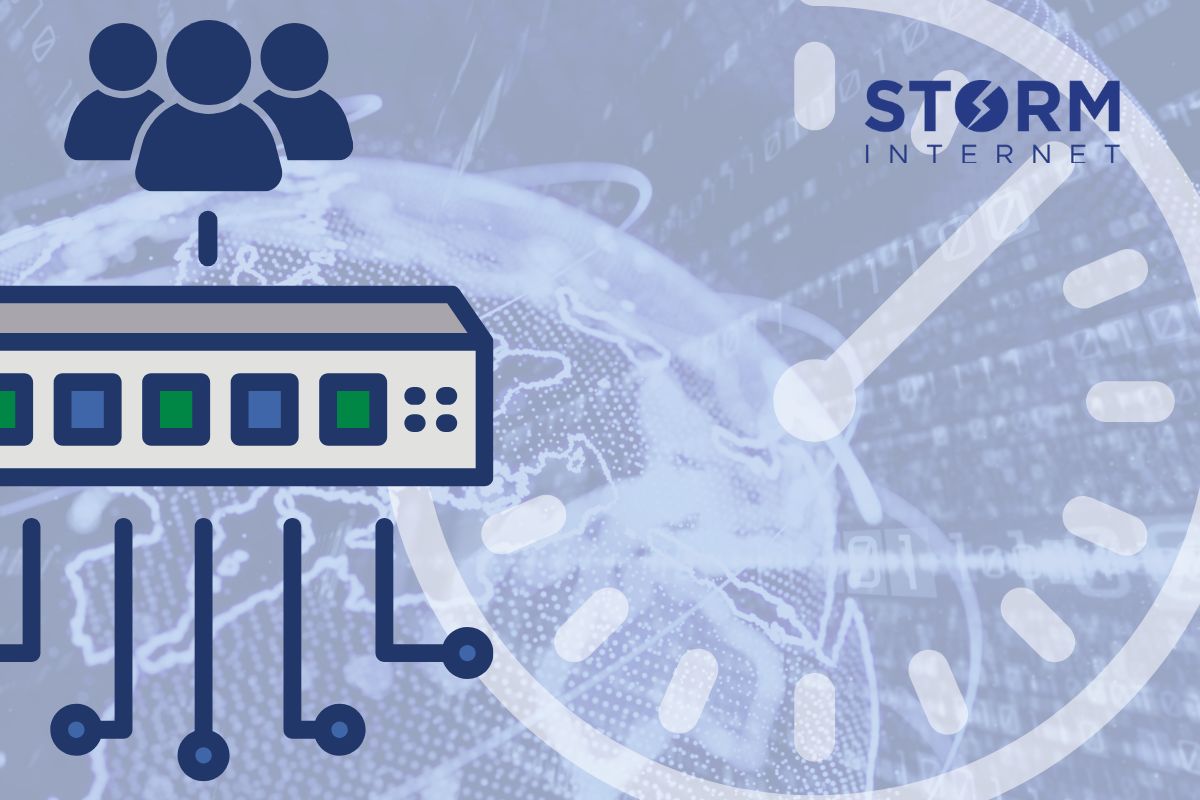Cloud Hosting
Is Multicloud the Right Move for You? A Practical Guide for SaaS Teams

In the age of always-on services and unforgiving user expectations, SaaS companies can no longer afford to put all their eggs in one cloud provider’s basket. The idea of multicloud – distributing workloads across more than one cloud platform – has moved from being a high-level strategy discussed in CIO roundtables to a practical solution that SaaS teams are actively implementing.
But multicloud is not for everyone. So how do you know if it’s right for your team?
In this guide, we’ll unpack the real-world benefits, trade-offs, and practical considerations to help you decide whether a multicloud strategy is the right next step for your SaaS stack.
What Exactly Is Multicloud?
It’s often confused with hybrid cloud, but they’re not the same. Here’s a quick overview of the main cloud computing environments:
- Single-cloud: You host all services on a single provider – AWS, Azure, or Google Cloud.
- Hybrid cloud: You combine a public cloud with on-premise or private infrastructure.
- Multicloud: You use two or more public cloud providers, often for different parts of your application or operations.
In a multicloud setup, for example, your front-end might run on AWS, your machine learning models on GCP, and backups stored on Azure.
Why SaaS Teams Are Eyeing Multicloud
A brief outage can lead to lost revenue, churned customers, and a dented reputation. Below are other major drivers behind the move to multicloud.
1. Uptime Is Non-Negotiable
Downtime is expensive – and becoming more common, even on the biggest platforms. In July 2024, Microsoft 365 services went dark globally, quickly followed by AWS outages that knocked out EC2, S3, and RDS access. For SaaS teams hosting all services in a single cloud, this meant being entirely offline.
Forrester reports that each hour of cloud downtime can cost up to $300,000, especially in regulated sectors like finance or healthcare.
A multicloud setup allows for failover between providers – if AWS has an issue, your GCP-hosted services keep running.
2. Escaping Vendor Lock-In
Sticking with a single provider can be a trap. Over time, you may find your architecture tailored to that cloud’s proprietary services and pricing models. Shifting becomes difficult and expensive.
“Many businesses are unaware of the hidden costs of sticking with a single cloud provider until it’s too late,” says Bhavin Desai, Multicloud Product Manager at Google. In his work with clients like PayPal and Uber, Desai has seen companies unlock innovation by breaking free of rigid single-cloud dependencies.
3. Optimising for Performance
Each cloud provider has unique strengths:
- AWS excels in compute services and developer tools.
- Google Cloud dominates in data analytics and AI.
- Azure integrates well with enterprise and Microsoft environments.
By splitting workloads across clouds, SaaS teams can optimise latency, speed, and performance by choosing the best tool for the job – no compromises.
4. Compliance Without Complexity
Handling data across regions? Regulatory minefields like GDPR, HIPAA, or PCI DSS can make cloud deployments tricky.
Multicloud enables regional data storage – keeping EU data in EU zones, for example – without needing a separate cloud contract for each jurisdiction.
“With a multicloud strategy, businesses can ensure that their data management complies with local laws,” notes Desai, “while also distributing sensitive information in a way that enhances security and reduces risk.”
5. Cost Efficiency (Yes, Really)
While multicloud can seem more expensive due to operational complexity, strategic use of each provider’s pricing can actually lower overall spend.
Airbnb’s multicloud approach using AWS services resulted in a 27% reduction in storage costs, according to Cogent Infotech. One financial institution cited in the 2023 State of Cloud report reallocated compute-intensive workloads to the most cost-effective provider and saved millions.
The Flip Side: When Multicloud Might Be Too Much
Despite the benefits, multicloud isn’t always a no-brainer. Here’s when it might not be the best path forward.
1. Operational Complexity
Running one cloud is hard. Running two or more? Exponentially harder. You’ll need to:
- Manage different consoles and APIs
- Sync disparate CI/CD pipelines
- Monitor workloads across multiple dashboards
- Enforce security policies consistently
Without the right tools or expertise, multicloud can create more problems than it solves.
2. Fragmented Tooling and Integration
Most SaaS teams rely on third-party tools for monitoring, observability, backups, etc. Not all tools support every cloud equally.
You may end up duplicating licenses or having to switch platforms mid-stream – eating into productivity and budgets.
3. Security Complexity
Each cloud has its own security model, policies, and tooling. More clouds = more surface area = more potential vulnerabilities.
It takes a disciplined DevSecOps practice to enforce security standards across clouds – and even then, the risk of configuration drift is real.
Key Indicators You Might Be Ready for Multicloud
So how do you know if your team is ready to go multicloud?
You might be ready if:
- You serve users globally and need region-specific performance
- Your app must meet multiple compliance requirements
- You’ve experienced downtime that hit your SLAs or customer trust
- Your cloud bill is growing faster than revenue
- You have a DevOps team with multicloud experience – or a managed provider (like Storm Internet) who does
On the other hand, you might want to hold off if:
- You’re an early-stage SaaS startup without dedicated DevOps
- Your team is still learning best practices on one cloud
- Your customer base is regionally limited with few compliance requirements
Making Multicloud Manageable: Best Practices
If you do go multicloud, make sure you’re not setting yourself up for chaos. Here’s how SaaS teams make it work.
1. Use Abstraction Layers
Tools like Kubernetes, Terraform, or Crossplane help you manage infrastructure agnostically. You define your architecture once, then deploy it across clouds with minor tweaks.
2. Centralise Monitoring and Logs
Use cross-platform observability tools like Datadog, New Relic, or Grafana Cloud. This lets you see what’s happening across all clouds from a single interface.
3. Standardise Deployment Pipelines
Avoid cloud-specific pipelines. Use tools like GitHub Actions, Argo CD, or Jenkins with cloud-agnostic runners to deploy code seamlessly across environments.
4. Segment Security Policies
Don’t try to make one policy fit every cloud. Use cloud-native tools (like AWS IAM, Azure Active Directory, GCP IAM) with a centralised governance tool for audits and reporting.
5. Leverage a Managed Multicloud Provider
Multicloud expertise isn’t always in-house – and that’s okay. Managed service providers (like Storm Internet) can design and run a multicloud architecture for you, ensuring you stay compliant, secure, and cost-efficient while freeing up your developers to focus on product delivery.
Real-World Outcomes: Multicloud in Action
These strategies aren’t theoretical. Fortune 500 companies have already reaped real rewards.
- One global SaaS provider cut its downtime by over 40% after migrating to multicloud.
- A financial giant saved millions annually by distributing workloads based on provider strengths and costs.
- A healthcare startup gained GDPR compliance while speeding up EU load times—without overhauling its US-based stack.
These aren’t exceptions; they’re the early signals of an industry-wide shift.
Conclusion: Should You Go Multicloud?
Multicloud isn’t just a trend – it’s a strategic shift toward resilience, agility, and performance. But it’s also a commitment to complexity, and it’s not something to leap into blindly.
Ask yourself:
- Do you have (or can you access) the skills to manage it?
- Are you serving customers whose experience depends on 100% uptime?
- Is compliance or pricing flexibility critical to your business model?0
If the answer to any of those is yes, multicloud may be exactly the infrastructure evolution your SaaS company needs.
But whether you manage it yourself or partner with a multicloud-ready provider, one thing’s clear: the days of putting all your faith in a single cloud are numbered.
Speak with a Storm Expert
Please leave us your details and we'll be in touch shortly
A Trusted Partner








